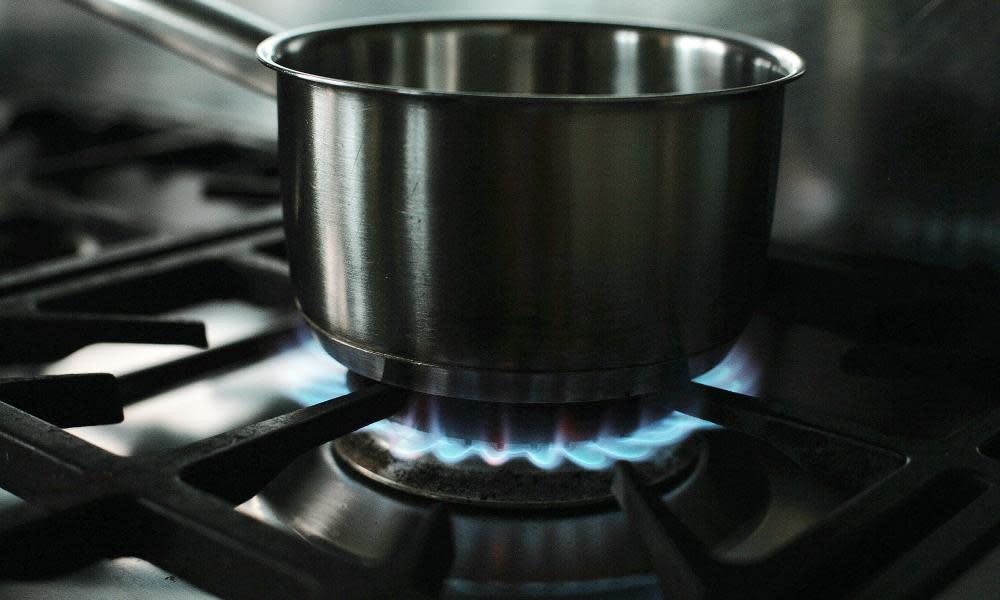Gas cookers pump out toxic particles linked to childhood asthma, report finds

Gas cookers are pumping toxic particles linked to childhood asthma into kitchens, living rooms and bedrooms across Europe, a report has found.
Dutch scientists measured the air quality in 247 homes and found average levels of nitrogen dioxide (NO2) were almost twice as high in those cooking with gas as in those cooking without. One in four homes with gas cookers breached hourly pollution levels set by the World Health Organization, while none of the homes in the control group, which used electric cookers, broke the limits.
Piet Jacobs, a scientist from the Netherlands Organisation for Applied Scientific Research, said: “Changing to electric cooking – preferably combined with use of well-designed ventilation hoods to reduce exposure to high levels of particulate matter from cooking – can bring these values down to below recommended levels.”
Burning gas to cook food releases pollutants such as NO2 that hurt lungs and inflame airways. Scientists have long known of an association between gas cookers and childhood asthma, though they have not proved a causal link between the two.
Related: Indoor wood burning raises women’s lung cancer risk by 43%, says US study
The report, which was commissioned by the energy efficiency group Clasp, measured indoor NO2 levels in seven European countries. The scientists chose homes in which people did not smoke, and that were far from busy roads and factories, to reduce the effect of other sources of pollution.
They found pollution spikes could last several hours and were more intense the longer people cooked. On average, the WHO daily limit for NO2 pollution was breached for 3.25 days over the 13-day testing period.
“This is a key study that will facilitate raising awareness and triggering action that will protect the health of those most vulnerable, like our children,” said Juana María Delgado-Saborit, the head of the environmental health research lab at Jaume I University in Spain, who served as an external reviewer for the study.
She said the biggest limitation of the study was that the researchers had to use sensors, which did not perform as well as the scientific instruments used to measure air quality in laboratories or outdoors. To counter this, they calibrated the sensors before and after installing them in each home, she said.
“I have seen the evidence from their quality assurance programme and I am confident that the researchers have used sound methods,” said Delgado-Saborit.
The study found that cooking with gas frequently led to levels of indoor air pollution that would be illegal outdoors. While the WHO guidelines for clean air apply indoors and outdoors, the rules in the EU and UK only govern outdoor pollution levels.
The report recommends that governments strengthen rules on cooking appliances, companies stop making and installing gas hobs and ovens, and consumers upgrade to electric cookers and ventilate their kitchens with cooker hoods and open windows.


